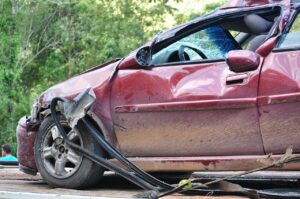California Survival Cause of Action

When a loved one dies from injuries resulting from someone else’s negligent or intentional wrongdoing, California Survival Cause of action may be available. Survival actions are those that would have been filed had the decedent not died from his injuries. Generally, California law allows the personal representative of the decedent’s estate to commence a lawsuit that survives the death of the loved one. If there is no personal representative, then it is the “successor in interest” that is permitted to sue for damages that the decedent could have sued for had he not died. The successor in interest is the person entitled to inherit the decedent’s estate, whether by will, trust, or intestacy laws of California.
Oftentimes, survival actions are confused with wrongful death actions. Where a wrongful death action compensates the family of the decedent for their losses, the survival action is meant to compensate the estate for the losses suffered by the decedent.
What is Required to Successfully Bring a Survival Cause of Action?
A survival claim can only be filed where the decedent did not immediately die from his injuries as a result of an accident. California Civil Code of Procedure Section 377.32 states that the successor in interest filing the survival action must file an affidavit stating the following:
- The decedent’s name
- The date and place of death
- The statement that there is no action pending in California for the administration of the decedent’s estate
- A copy of the final order showing the distribution of the decedent’s cause of action to the successor in interest where the estate has been administered
- A statement with supporting facts that the affiant is the successor in interest or authorization for someone to file the survival action on behalf of the successor in interest.
- A statement that no other person has superior rights to the decedent’s cause of action
- A statement swearing that the affidavit is true and correct
- An attached certified copy of the decedent’s death certificate
Additionally, the statute of limitations permits the successor of interest to bring the claim within two years of the date of the wrongful act or six months after the death of the decedent, whichever is later.
Damages Available in a Survival Action
Because the damages are meant to compensate the estate for losses suffered by the decedent, they are limited to those sustained before death, and those that the decedent would have been entitled to had he survived. This does not include damages for pain or suffering. It does, however, include damages for medical expenses, lost wages between the date of the accident and the date of death, and at times, punitive damages.
Has a Loved One Died Through No Fault of His Own?
If you are the personal representative or a successor in interest of a decedent’s estate and that decedent died as a result of someone else’s wrongdoing, call the Personal Injury Lawyers at Jahrmarkt & Associates. Our experienced lawyers will help you understand the compensation to which the decedent’s estate might be entitled. Call for California Survival Cause (310) 226-7676 or visit our website for your free consultation.

 D5 Creation
D5 Creation